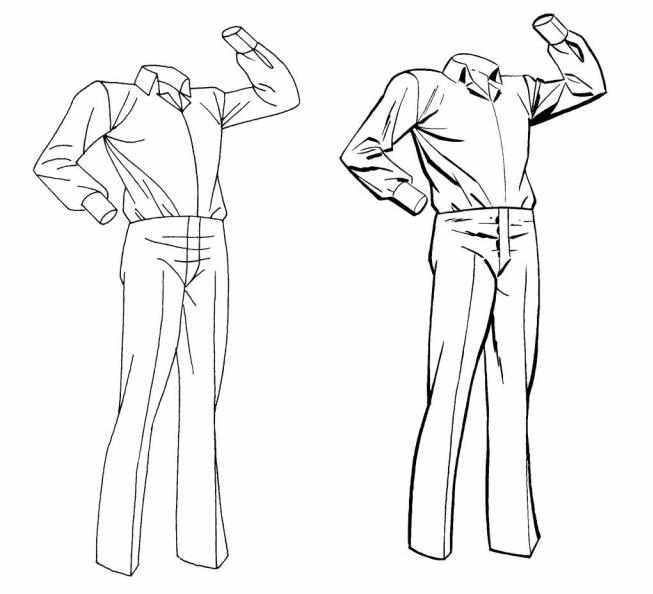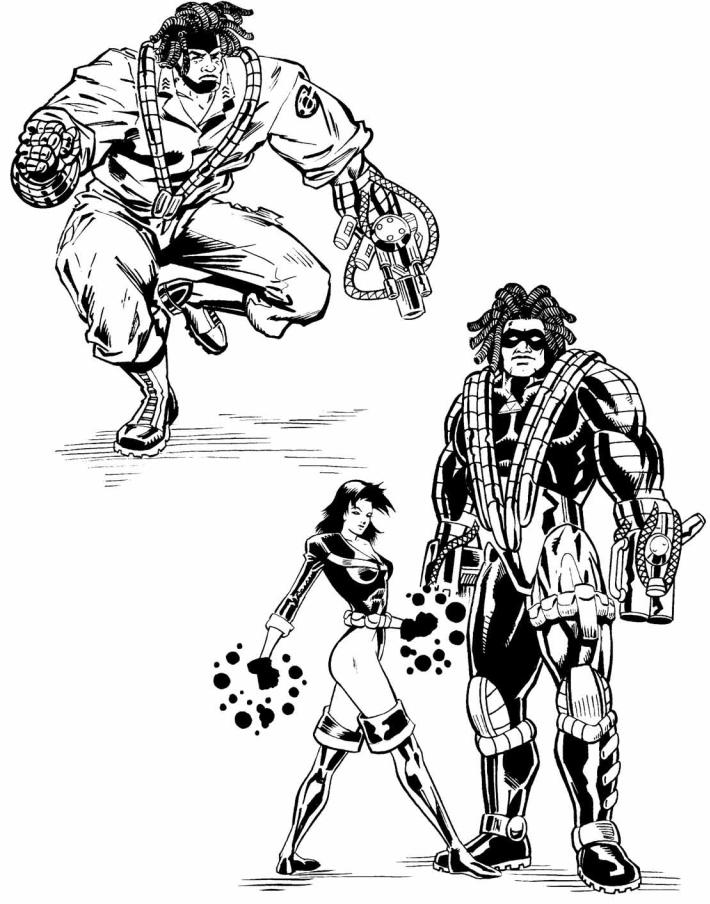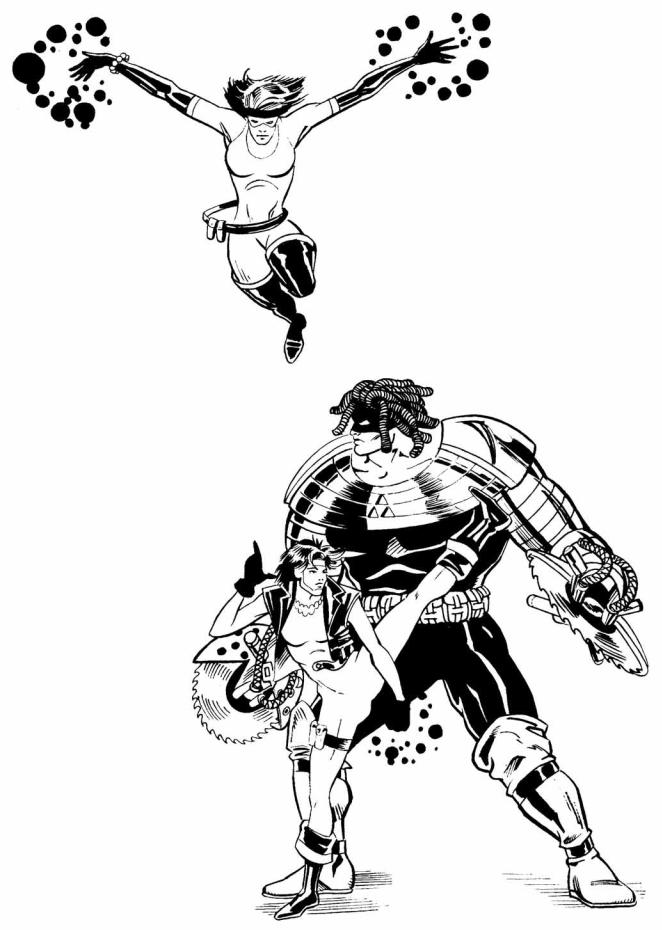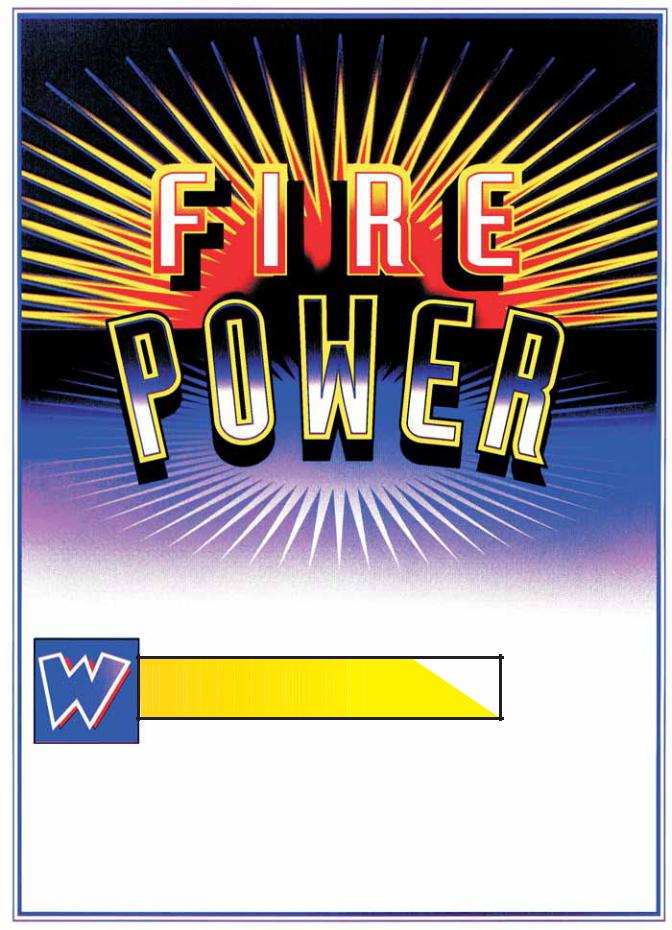
- •Acknowledgments
- •Contents
- •Introduction
- •The Contributing Artists
- •Sketching Different Head Shapes
- •Facial Features
- •How to Draw Hair
- •Popular Comic Book Expressions
- •Grimaces
- •Anatomical Proportions
- •Body Basics
- •Building an Action Pose
- •The Action Figure, Step By Step
- •The Heroic Female Figure
- •Anatomy of the Hand
- •Basic Hand Poses
- •Heroic Hands
- •Female Hands
- •Turnarounds
- •Devastating Punches
- •Clean Punches
- •The Lunge Attack
- •Leaning Into the Punch or Kick
- •The Judo Shoulder Throw
- •David vs. Goliath
- •The Balance of Power
- •The Renegade Soldier
- •Sword-and-Sorcery Villains
- •Forces of Evil
- •Inventing a Villain
- •Beastly Villains
- •Hollywood Heavies
- •Dressed to Kill
- •Unearthly Creatures
- •Comic Book Beauties Then...
- •Femme Fatales Yesterday...
- •...And Today
- •Denizen of the Street
- •Beauty in All Shapes and Colors
- •Drawing from Photos
- •Good Gal Heroes
- •Strong But Sexy
- •A Hint About Skintight Costumes
- •One-Point Perspective
- •Two-Point Perspective
- •The Horizon Line and the Figure
- •Multiple Figures in Perspective
- •Hanging Figures on a Horizontal Line
- •Creating Volume with Perspective
- •Dynamic Angles
- •From Start to Finish
- •Using Pattern and Value
- •Special Effects in Space
- •Bursts
- •Putting It All Together
- •Effective Composition
- •The Establishing Shot
- •What a Comic Book Script Looks Like
- •Thumbnail Sketches
- •The Rough Layout
- •Preparing a Pencil Layout for Inking
- •The Final Inked Page
- •Inking Like a Pro
- •Stuff You Need to Know
- •Art Supplies Shopping List
- •Reflections
- •Light Source
- •Shading
- •Varying An Ink Line
- •Folds and Drapery
- •Designing Costumes
- •Rapid Fire
- •In The Crosshairs
- •Hidden Danger
- •Aggressive Assault Vehicles
- •Off-Road
- •Mean Machines
- •Sky Patrol
- •Fighter Planes
- •How Things are Supposed To Get Done
- •How to Get Your First Job
- •Interview With A Noted Comic Book Editor and Publisher

VARYING AN INK LINE
The figure below, left, looks flat and dull. That's because it's drawn with only one thickness of
line. So that your drawing has life, it's important to vary the thickness of a line. But you've got to have a plan. You can't just alternate thin and thick lines with no underlying purpose, because that would look weird.
The figure below, right, looks three dimensional. And there's some logic to it. If the source of light is
above the figure, which is generally the case, the thinner lines are drawn toward the light, and the thicker ones are drawn away from it. More lines are usually apparent on the folds of the shaded side. The light source for the example below, right, is above and to the right of the figure. Can you see that? With the exception of heavy folds, the lines within a figure are lighter than the lines on its perimeter.

folds and drapery
Not all clothes or fabrics fold the same way. Because many beginning
artists draw only skintight plastic suits for their comic book heroes and heroines, they're at a loss when they have to draw a character in something as simple as a button-down shirt. Take a moment to notice the kinds of folds made by different types of clothes.
This character is outfitted in a baggy costume based on a biblical or Middle Eastern theme. Its folds, therefore, are soft and loose.
This character is outfitted in a fantasy style. Flowing and ornate, her costume is based on ancient Greek and Roman clothing. It is best served by a feeling of gravity pulling on it eliminating the folds you'd find in a baggy costume. The fabric ends up as inert folds around the bottom of the costume, where it bunches up.
This character is dressed in modern, tailored attire. The synthetic fabric creates crisp
folds in shorter, straighter lines.

designing costumes
C ostumes are fashioned in one of two ways: skintight, as if they
were painted on; and loose. Skintight costumes are easier to draw, but require heavy shading to give them a slick, three-dimensional quality. Loose clothing requires more planning to show the correct flow of the folds.

Try both textures on your characters before deciding. By costuming your characters in different looks, you can see how clothes really do make the character. You can invent large accessories for costumes that have no useful function except making your characters look tough.
The metallic look, as shown
in this character's armor collar, requires shading to indicate glints of light.

EAPONS HAVE ALWAYS BEEN POPULAR comic book props, since
they heighten the stakes in a story. If one character has a serious weapon, then the motivation for winning-and the fear
of losing-is much greater. Whoever holds the bigger weapon takes on the role of the hunter, while the character who is out-gunned becomes the prey. If two characters have equally powerful weapons, the city will be annihilated during a shattering fight scene.

